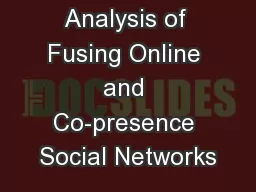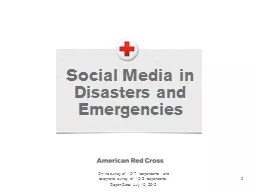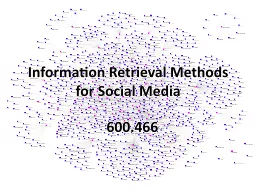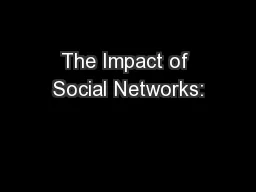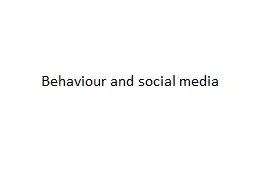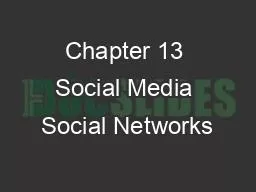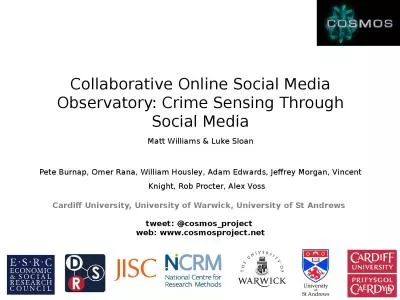PPT-Online Social Networks and Media
Author : alexa-scheidler | Published Date : 2019-06-27
Network Ties How simple processes at the level of individual nodes and links can have complex effects at the whole population How information flows within the
Presentation Embed Code
Download Presentation
Download Presentation The PPT/PDF document "Online Social Networks and Media" is the property of its rightful owner. Permission is granted to download and print the materials on this website for personal, non-commercial use only, and to display it on your personal computer provided you do not modify the materials and that you retain all copyright notices contained in the materials. By downloading content from our website, you accept the terms of this agreement.
Online Social Networks and Media: Transcript
Download Rules Of Document
"Online Social Networks and Media"The content belongs to its owner. You may download and print it for personal use, without modification, and keep all copyright notices. By downloading, you agree to these terms.
Related Documents


